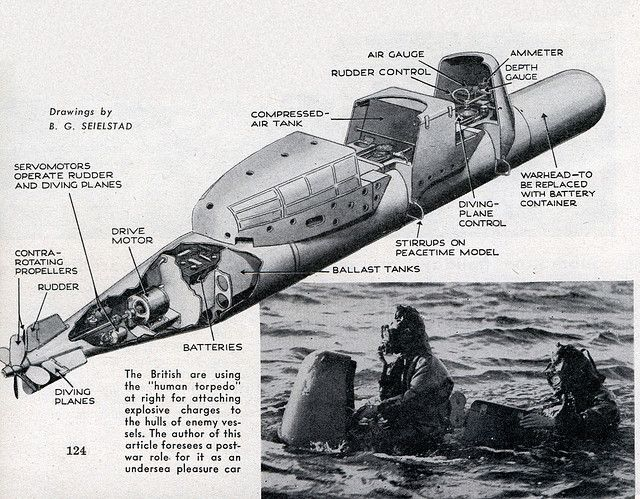Image 1:) The XL-AUV.
The XL-AUV (Autonomous Underwater Vehicle) is an undersea drone that dives 6000 meters. The size of this drone is about the same as the bus, and it might use some kind of fuel cells as a power supply or a small nuclear reactor. The system is quite similar to the Russian "Poseidon" or Status-6 torpedo, but the XL-AUV is a multipurpose tool.
The XL-UAV can have a cargo bay where operators can put their equipment. And the XL-UAV can operate for military and civil purposes. The system uses the body that allows water to inside it. And that thing allows it to dive deeper than many other systems. The XL-AUV can carry equipment or a nuclear detonator in the same cargo bay. So it's the western response to the Russian Poseidon torpedo.
Image 2) German WWII midget submarine. (Pinterest)
Image 3) British WWII midget submarine. (Pinterest)
The nuclear-powered robot submarines can carry torpedos or missiles outside their body. And nuclear power makes their operational range virtually unlimited. The base of those systems is in a German "Neger" (Image 2) miniature submarine and a British midget submarine called "Chariot". (Image 3)
The problem with that system was the limited range. Also, those manned torpedos' materials and requirements for the crew, were not so advanced that they could be safe. In WW2 the British combat divers tried to put timed mines into the body of other submarines. And the Chariot vehicles are giving innovation in that the miniature submarines can host also robots.
But the advanced artificial intelligence. Nuclear power makes those systems very multipurpose. Automatized robot submarines can carry civil or military personnel in their missions. The crew can stay in the cabin and the highly automatized systems will transport them. The miniature nuclear-powered submarines can travel over the ocean. They are hard to detect. And if miniature submarines are equipped with torpedos. Those systems can cause a threat to all other submarines and surface ships.
https://www.tekniikkatalous.fi/uutiset/yhdysvaltain-asevoimat-tilasi-linja-auton-kokoisen-100-miljoonan-dollarin-vedenalaisen-dronen-sukeltaa-6000-metriin-vaikka-runko-ei-ole-vedenkestava/1d588eb2-7f33-4ca0-b948-780d473e3218
https://www.unmannedsystemstechnology.com/2022/05/locally-built-extra-large-auvs-for-royal-australian-navy/
Image 1) https://www.unmannedsystemstechnology.com/2022/05/locally-built-extra-large-auvs-for-royal-australian-navy/
https://designandinnovationtales.blogspot.com/



Comments
Post a Comment